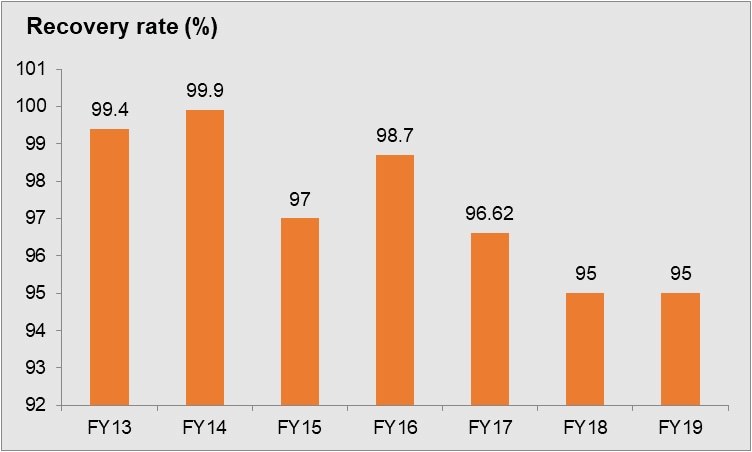Pak-Gulf Leasing Company Limited
Pak-Gulf Leasing Company Limited (PSX: PGLC) was established in 1994 as a public limited company, while it did not commence operations until 1996. The company’s principal business is that of leasing.
Shareholding pattern

A major part of the shareholding is owned by the directors, CEO, their spouses, and minor children, at close to 31 percent. Of this, Mr. Pervez Inam, a director of the company, holds nearly 16 percent, followed by Mr. Sohail Inam Ellahi, chairman, holding almost 10 percent and Mr. Fawad Salim Malik, another director, holding 5 percent of the shares. About 55 percent shares are with the individuals and about 11 percent held under the category associated companies, undertakings, and related parties. This category includes Unibro Industries Limited and Mid East Agencies (Pvt) Limited.
Historical operational performance
Income from leasing operations has, unarguably, been the primary source of revenue for Pak-Gulf Leasing Company. Its contribution has consistently hovered around the 90 percent mark.
During FY15, their lease portfolio grew by 14 percent, with 51 new leases written. Since most of these leases were written in the last quarter of FY15, the effect of this were expected seen in income form leasing operations of FY16. Asset-wise distribution shows that nearly 89 percent of the investment in lease was made in machinery and equipment whereas electrical goods led the sector-wise category. “Others” made up almost 43 percent of the investment. Finance cost has increased during the year to fund the increase in lease writing. Previously, the company would source its cash from internal operations, however, the rise in business required them to finance through short-term borrowings. For the year, the increase in revenue exceeded the increase in costs, allowing profit margin to increase.

Lease portfolio grew by almost 27 percent as 80 new leases were written in FY16 compared to previous year’s 51. Asset-wise, machinery and equipment remained the mainstay of investment in lease with 83 percent, while investment in lease of vehicle grew marginally to 11 percent (FY15: 9.4 percent). Looking at the distribution sector-wise, electrical goods made up a little over 12 percent of the investment in lease. The company has focused on a well-diversified portfolio, with investment in lease made in over 14 specific sectors, while nearly 50 percent were made under the “others” category. While there was marginal increase in finance expense, administrative costs grew to claim 48 percent of the revenue due to inflationary impact, lowering profit margins for the year.

Number of leases written continued to grow during FY17 as 104 new leases were written. The share for vehicle grew in the asset-wise distribution while, machinery and equipment still claimed the major chunk of investment in lease. Sector-wise saw “others” category growing, making up nearly 71 percent of the investment in lease. Some support to the total income was also brought in by other income generated through a combination of rental income and unrealized gain on revaluation of investment property. With minor changes in expenses, profit margin increased only marginally.

Pak-Gulf Leasing Company remained on its growth trajectory as number of leases written during FY18 grew to 132, registering a 27 percent increase. Keeping with the trend observed in the last three years, the share of vehicle increased in the asset-wise distribution while machinery and equipment reduced to 77 percent. Sector-wise distribution saw a major change as the share of “others” category, which had so far claimed a major chunk of investment in lease, reduced to near 8 percent while construction sector gained momentum making up almost 22 percent, followed by energy, oil and gas- together making up roughly 15 percent. On the costs side, finance expense rose due to “increased utilization of available finance facilities”. However, this was offset by a decline in administrative costs allowing profit margin to grow.

There was a slight decline in number of new leases written during FY19- from 132 in FY18 to 104 in FY19. Share of machinery and equipment was down to 72 percent whereas vehicle saw its share increasing gradually- to 20 percent as of FY19. Energy, oil and gas led the sector-wise distribution at 21 percent share in lease portfolio, closely followed by “others” at 18 percent; media and entertainment and health care were other major areas, while construction was relatively below last year’s level to 6 percent. Finance expense increased considerably lowering profit margins to a level last seen in FY12.
Quarterly results and outlook
There was a near 24 percent increase in total revenue, whereas income from lease operations registered a 26 percent growth during 9MFY20. Finance expense continued to increase due to inflation as well as increased utilization of available finance facilities. During the period, the company had to make provisions for non-performing lessees, leases held under litigation and non-performing diminishing musharakah contracts that drove down profit margins year on year.

Businesses were already going through a period of declining growth rate and adverse market conditions when the situation was worsened with the outbreak of Covid-19. The declining profitability of businesses has caused an increase in credit risk of the company. Due to the uncertainty regarding the duration and effects of the pandemic, the future is difficult to predict.





























Comments
Comments are closed.